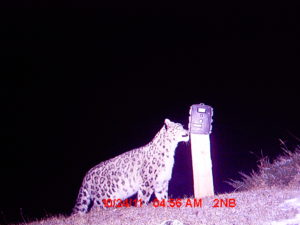http://www.dailytimes.com.pk/default.asp?page=2012\01\23\story_23-1-2012_pg7_10
KARACHI: As many as 2,500 people from various spheres of life, including schools, colleges and universities students, participated in annual Travelling Nature Carnival held here at PAF Museum Sunday, organised by World Wide Fund for Nature (WWF)-Pakistan in collaboration with Indus Motor Company (IMC).
The carnival was aimed at motivating and involving youth and general public in valuing the rich natural heritage of Pakistan, and supporting conservation initiatives.
Among its several engaging activities, the most innovative was the 3D display model competition. Hundreds of students participated in live presentations to the judges and guests, featuring themes such as habitat conservation of endangered species (snow leopard, green turtle, Indus dolphin), water conservation, a green idea, solid waste management (recycle, reuse, reduce), global warming and climate change, ecotourism, energy conservation, and green architecture.
The winning institutes were bestowed with shields and certificates. There were 150 stalls set up by schools, universities and commercial entities.
The carnival also arranged environment puppet show, live musical performance, magic show, environment games and quizzes, nature art exhibition, theatre, and environment debate competition.
Speaking on the occasion, WWF-Pakistan’s Regional Director Rab Nawaz pointed out that through the carnival environmental messages could be conveyed to the large number of audience. He further said that children are the stewards for change; they should be equipped with conservation practices, he urged.
Senior Manager Corporate Relation, WWF Pakistan Marriyum Aurangzeb said that for past 10 years, WWF Pakistan’s nature carnival had been playing its role as a unique endeavour that brought together thousands of visitors, such as students, families, corporate sector, media, government organisations, conservation organisations and general public. It provides a collective platform for building knowledge and interest in responsible action, ecologically conscious development and sustainable living.
MD IMC Pervaiz Ghias was the guest of honour at the carnival. While speaking to the participants, he said that the Toyota environmental programme launched in 2011, in partnership with WWF-Pakistan, being implemented in 100 schools, 15 colleges and 10 universities, was a great success.
IMC is proud to be a part of the carnival and hopes to make the young generation of Pakistan an environmentally sensitive generation and a guardian of our natural resources.
Programme Coordinator Indus for All Programme Nasir Ali Panhwar stressed on the unique nature of carnival in terms of establishing diverse level of participation and an integrated approach towards nature conservation. He highlighted need of creating awareness about environmental issues with support of media.


